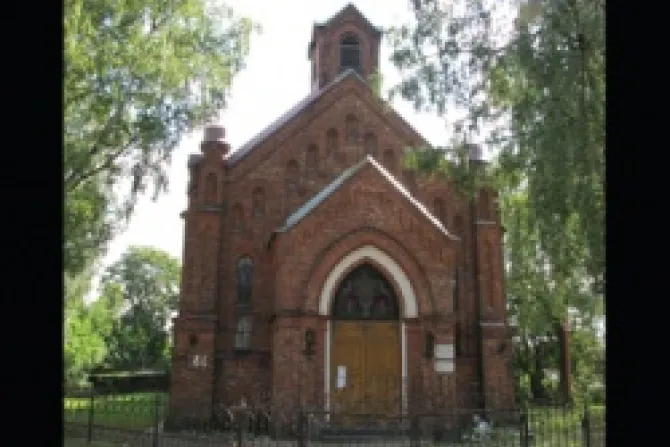Moscow, Russia, Jun 23, 2013 / 15:04 pm
To mark the Year of Faith in Russia, lay-Catholic group Una Voce has organized a five-day pilgrimage in honor of 11th-century king Saint Olaf, including daily Mass and veneration of his icon.
The pilgrimage will last from July 25 to 29 – concluding in the northern city of Veliky Novgorod – and brings together Catholics devoted to both the extraordinary form of the Roman Rite and to the Byzantine rite.
"The idea was to do something traditional for the Year of Faith," Oleg-Michael Martynov, a board member of Una Voce Russia, told CNA June 13.
"It's quite important for us because St. Olaf is one of the relatively few Catholic saints who have actually been to what is now the territory of the Russian Federation."
Pilgrims will prepare for their journey on July 24 with a preparatory program of spiritual exercises. Martynov expects these will include a small retreat, a day of prayer, and recollections from the priest in Luga.
The pilgrimage will begin July 25 with a Mass in the extraordinary form at St. Nicholas parish in Luga, and a blessing of the pilgrims. The pilgrims will walk the 60 miles to Veliky Novgorod over the course of five days. The two cities are located between St. Petersburg and Moscow.
The following day, Divine Liturgy will be celebrated according to the Byzantine Rite, and will alternate each day with Mass. The pilgrimage concludes on July 29 at the parish of Ss. Peter and Paul, where the icon of St. Olaf will be venerated. That day, the priests will say a solemn Mass in the extraordinary form for the feast of St. Olaf.
Una Voce Russia reports that the St. Olaf pilgrimage is occurring with the blessing of both the Russian primate, Archbishop Paolo Pezzi of the Mother of God at Moscow, and Bishop Joseph Werth of Transfiguration at Novosibirsk, who is also responsible for all Eastern Catholics in Russia.
Una Voce Russia is part of the international Una Voce movement, which is dedicated to ensuring that the extraordinary form of the Roman rite – how the liturgy was celebrated until after the Second Vatican Council – is maintained, and which promotes the use of Latin, Gregorian chant, and polyphony.
Among its early members were the composers Maurice Duruflé and Oliver Messiaen.
To celebrate the Year of Faith, the pilgrimage will feature three evening lectures on the documents of the Second Vatican Council. Attending at least three talks on the documents of the council, which began 50 years ago, are the first way to gain a plenary indulgence for the Year of Faith.
"The lectures are not about celebrating the council without any depth," Martynov said. "We want people to know, and we ourselves to learn, what did this council really say; not what is the spirit of the council...but what it really was."
The lectures will be about three different documents of Vatican II, Nostra aetate, Unitatis redintegratio, and Ad gentes. These are the documents on non-Christian religions, ecumenism, and missionary activity, respectively.
"I think it will be quite interesting lectures, maybe much more interesting than what an average Catholic usually hears about the council from the pulpit," reflected Martynov.
He noted that St. Olaf was chosen as patron of the pilgrimage following Benedict XVI's "appeal for the fostering of devotion to local saints."
"We started thinking, who are our local saints, because we venerate so many saints who lived in western Europe – St. Anthony of Padua, or St. Louis of France, St. Francis – but we don't know much about those who actually walked the same lands we are walking now."
St. Olaf was king of Norway from 1015 to 1028, and he was instrumental in the Christianization of his country. When he was deposed from this throne by pagans, he went into exile and stayed with the prince of Veliky Novgorod.
He later returned to Norway and was martyred at the battle of Stiklestad on July 29, 1030. He inspired his troops during the battle by exclaiming, "Forward, forward, people of Christ, people of the cross, people of the king."
Martynov noted that "some of us have been to the Chartres pilgrimage and liked it much...and we decided to give it a try."
The Chartres pilgrimage in France celebrates Pentecost and is an institution of 31 years. It attracts between eight and 10,000 pilgrims every year.
It has given rise to many other smaller pilgrimages throughout the world, now including the St. Olaf pilgrimage in Russia.
"We hope it will be a success and will be repeated later, maybe next year," Martynov said.
"Everyone is welcome to take part in the pilgrimage," he added, "but I don't think many people from America will be able to come – it's a long way."



